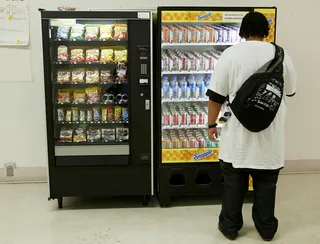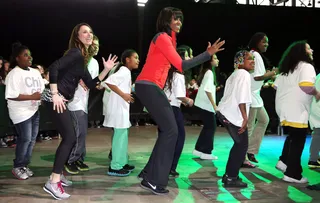Why Childhood Obesity Matters
Read about childhood obesity and stats among Black children.

1 / 10
September Is National Childhood Obesity Awareness Month! - Did you know that one in three children in the U.S. are overweight or obese and 17 percent of kids are obese? This month is Childhood Obesity Awareness Month. Learn more about the stats and how it impacts African-American children. — Kellee Terrell(Photo: REUTERS/Brendan McDermid)

2 / 10
What Is Childhood Obesity? - Childhood obesity occurs when a child is well above the normal weight for his or her age and height, says Web MD. Obesity is defined as having a body mass index (BMI) higher than 30. (Photo: Justin Sullivan/Getty Images)
Photo By Justin Sullivan/Getty Images

3 / 10
Why Is It a Serious Epidemic? - What we might call “baby fat” is a serious epidemic. Childhood obesity puts kids at risk for health problems that were once seen only in adults, like type 2 diabetes, high blood pressure, heart disease, sleep disorders, asthma, early puberty and high cholesterol. (Photo: Justin Sullivan/Getty Images)

4 / 10
Numbers Don’t Lie - The statistics for child obesity and Black children are not encouraging. Twenty-four percent of African-American girls and 19 percent of African-American boys ages 6-19 are overweight. Meanwhile, 22.4 percent of African-American children ages 6 to 17 are obese, according to the Centers for Disease Control and Prevention. (Photo: John Moore/Getty Images)

5 / 10
What Causes Obesity Among Kids? - Living sedentary lifestyles and eating unhealthy foods such as fast food and candy are major factors in why childhood obesity is on the rise in the U.S. Also food insecurity, relying on cheaper unhealthy foods for nourishment, poverty and parental influence play a role as well. (Photo: Photodisc/Getty Images)
ADVERTISEMENT

6 / 10
Sugary Drinks’ Role - Another factor in childhood obesity is young people’s infatuation with sugary drinks, which include soda, energy drinks and even fruit juices. When it comes to Black youth, energy drinks and fruit juice, which contain as much if not more sugar, are more popular than soda. (Photo: Mario Tama/Getty Images)

7 / 10
The Stigma of Being Obese - Studies show that obese children can experience bullying, suffer from low self-esteem and anxiety, have lower grades and experience bouts of depression, says Web MD. Parents should pay special attention to any behavior changes in their children and provide as much emotional support as possible. (Photo: Digital Vision/Getty Images)

8 / 10
See Your Doctor - Hearing that your kid needs to lose weight isn’t easy, but it’s important to be open to your doctor’s diagnosis and to understand that obesity is a serious problem. The doctor is going to ask a lot of questions about your child’s lifestyle, please know that this is not an attack against you, but a way for them to better access how to address your child’s weight loss plan. (Photo: Tetra Images/Getty Images)

9 / 10
The Answer Begins With Adults - A kid cannot lose weight if a parent continues to cook unhealthy, fatty foods. You have to lead by example and make healthy living a family affair: Cooking together as a family, researching healthy recipes together and going on family walks or having family workout days. (Photo: Purestock/Getty Images)
